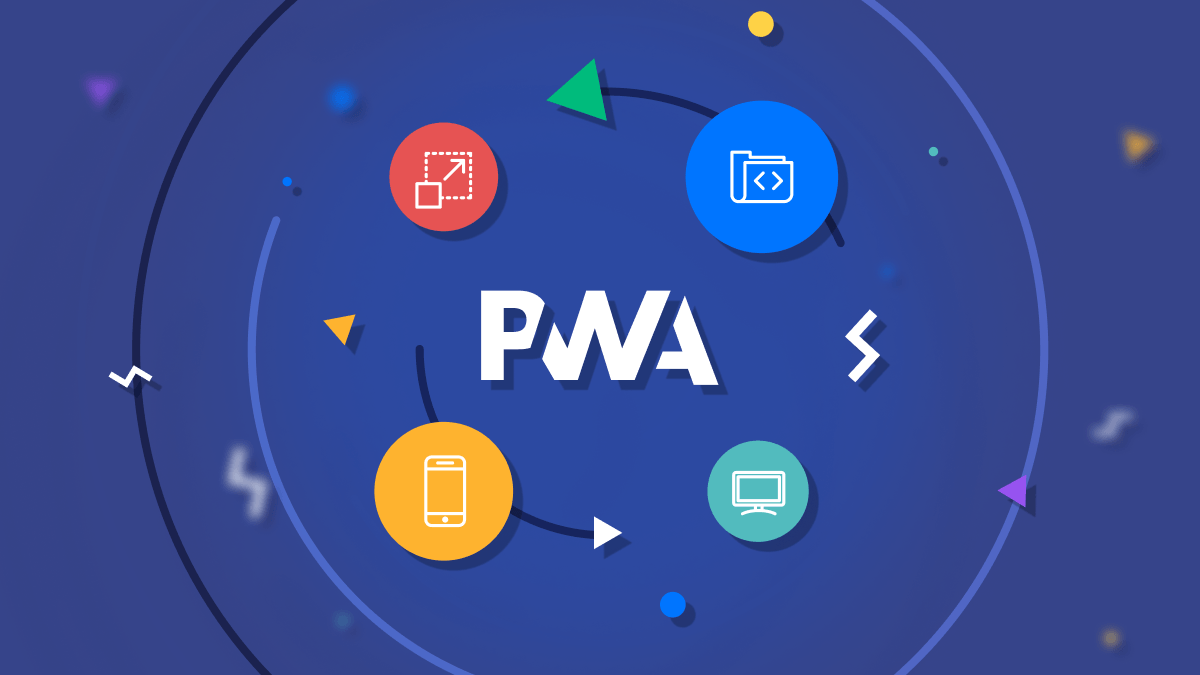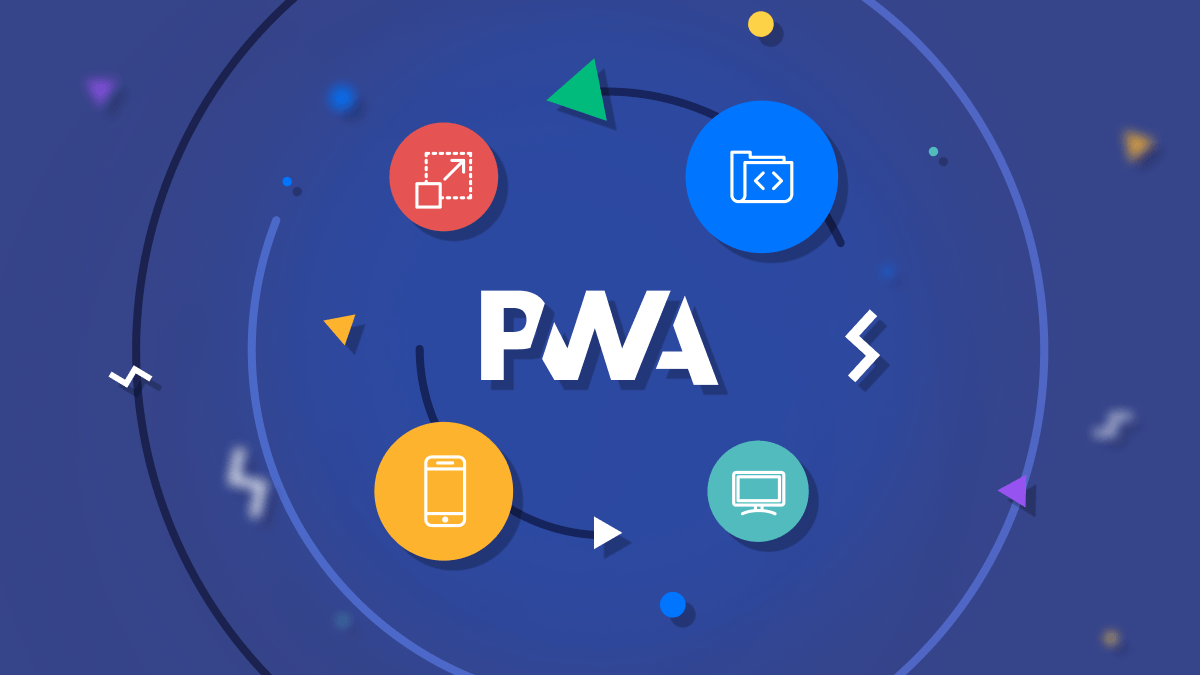Introduction to Progressive Web Apps (PWAs)
 Tushar Mishra
Tushar Mishra
Introduction:
In today's digital landscape, providing a smooth and engaging user experience across multiple devices and platforms has become crucial for businesses and developers. Progressive Web Apps (PWAs) have emerged as a modern solution to bridge the gap between traditional websites and native mobile applications. In this blog post, we'll explore the concept of PWAs, their benefits, and their potential impact on the future of web development.

Understanding Progressive Web Apps:
Progressive Web Apps (PWAs) are a relatively new approach to web development that aims to bridge the gap between traditional websites and native mobile applications. They leverage modern web technologies and design principles to provide users with an app-like experience directly through a web browser. PWAs are designed to be responsive, reliable, and engaging, offering a seamless user experience across different devices and network conditions.
Let's delve deeper into the key aspects that make PWAs unique and valuable:
Progressive Enhancement: The term "progressive" in PWAs refers to their ability to work on any browser or device, regardless of its capabilities. PWAs are built using progressive enhancement techniques, which means that they can take advantage of the latest web technologies if the browser supports them, while still providing a functional experience on older browsers. This approach ensures that PWAs are accessible to a wide range of users and can adapt to varying levels of browser support.
Responsive Design: PWAs are designed to be responsive, meaning they can adapt and provide an optimal user experience across different screen sizes and orientations. This responsiveness allows PWAs to seamlessly transition between desktop, tablet, and mobile devices, ensuring that users can access and use the app regardless of the device they are using.
Service Workers: One of the key technologies behind PWAs is the use of service workers. Service workers are JavaScript files that run in the background and act as a proxy between the application, the browser, and the network. They enable features such as offline functionality, push notifications, background syncing, and caching of app resources. With service workers, PWAs can function even when there is limited or no internet connectivity, making them reliable and resilient in various network conditions.
App-like Features: PWAs aim to provide an app-like experience to users, blurring the lines between web and native applications. They can be installed directly from the web browser onto the user's device, creating a home screen icon and allowing users to access the app with a single tap. PWAs can run in a full-screen mode, hide browser navigation elements, and provide smooth transitions and animations, mimicking the behavior of native apps. Additionally, PWAs can leverage device features such as camera access, geolocation, and offline storage to enhance the user experience.
Discoverability: Unlike native mobile apps that typically require users to search and download them from an app store, PWAs are discoverable through search engines. This means that users can find and access PWAs through a simple web search, which significantly reduces the barrier to entry. Additionally, PWAs can be easily shared via URLs or QR codes, allowing users to access the app instantly without the need for installations or downloads.
Security: Security is a crucial aspect of PWAs. To ensure a secure connection between the user and the app, PWAs are served exclusively over HTTPS. This encryption ensures that the data transmitted between the user's device and the server remains confidential and protected from unauthorized access or tampering.
Continuous Updates: Updating PWAs is seamless and hassle-free. Developers can push updates to the PWA directly from the server, ensuring that users always have access to the latest version of the app without requiring manual updates or going through app store approval processes. This streamlined update process allows developers to iterate and improve their PWAs quickly, providing users with a consistently improved experience.

Key Features of PWA:
Progressive: The PWA works for all users, regardless of the browser or device they are using. They can progressively extend their functionality depending on the capabilities supported by the user's device and browser.
Responsive: PWAs are designed to adapt to different screen sizes, ensuring a consistent user experience across desktops, tablets, and smartphones.
Connectivity Independent: The PWA can work offline or with a limited internet connection, thanks to Service Workers – a powerful JavaScript feature that allows caching of app resources and offline functionality.
App-like experience: PWAs provide users with a native-like experience, with features such as push notifications, home screen icons, and full-screen mode, making them indistinguishable from traditional mobile applications.
Discoverability: Unlike native apps that require users to search and download them from app stores, PWAs can be easily discovered through search engines, shared links or QR codes.
Secure: The PWA is served over HTTPS, which ensures a secure connection and protects user data.
Benefits of PWA:
Enhanced User Experience: PWAs provide a fast and engaging experience, improve user satisfaction and reduce bounce rates. Features like offline access, push notifications, and smooth transitions make PWAs feel like native apps.
Better Performance: PWAs are built with performance in mind. They use caching techniques, preloading, and lazy loading to reduce load times and provide a faster experience even on slow networks.
Cost-effective development: Developing a PWA eliminates the need to build separate apps for multiple platforms. A single codebase can be deployed across a variety of devices and platforms, reducing development time and cost.
Easy Maintenance: Updating a PWA is seamless, as changes can be sent directly to the server. Users will always have access to the latest version of the app without the need for manual updates.
Wider reach: PWAs can reach a wider audience because they can be accessed on any device with a web browser, without the need for specific app store installations.
Examples of successful PWAs:
a) Twitter Lite: Twitter's PWA provides a fast, data-friendly version of its platform, allowing users to access their feed and receive notifications even on low-end devices or slow networks.
b) Starbucks: Starbucks' PWA provides a seamless ordering experience, allowing customers to browse the menu, customize their drinks, and place orders directly from their devices.
c) Pinterest: Pinterest's PWA enables users to seamlessly discover, save and organize content, providing an app-like experience across devices.

Future of PWAs:
The future of Progressive Web Apps (PWAs) is promising, with growing support from major browsers and platforms. Here are some key aspects that indicate the bright future of PWAs:
Increased Adoption: As awareness and understanding of PWAs continue to spread, more businesses and developers are embracing this modern approach to web development. The flexibility and cross-platform nature of PWAs make them an attractive choice for companies looking to reach a broader audience without investing in separate native applications for different platforms. The increasing adoption of PWAs by industry leaders and popular brands further validates their effectiveness and potential.
Evolving Web Standards: The web standards and technologies that power PWAs are constantly evolving and improving. Browser APIs and features essential for PWAs, such as service workers, web app manifests, and push notifications, are being refined and expanded. This evolution ensures that PWAs can leverage the latest web capabilities, delivering even richer and more immersive experiences to users.
Improved Browser Support: Major web browsers, including Google Chrome, Mozilla Firefox, and Microsoft Edge, have been actively supporting and enhancing the capabilities necessary for PWAs. Browser vendors are committed to closing the gap between web and native applications, enabling PWAs to access device features and behave more like traditional apps. With better browser support, PWAs can reach their full potential and offer consistent experiences across different platforms.
Growing Mobile Dominance: Mobile devices have become the primary means of accessing the internet for many users worldwide. PWAs are well-positioned to cater to this mobile-centric landscape, offering a lightweight and easily accessible alternative to native mobile apps. As mobile usage continues to grow, PWAs can provide a cost-effective and efficient solution for businesses to engage with their mobile audience.
Enhanced User Experience: The primary goal of PWAs is to deliver an exceptional user experience. As technology advances, PWAs will continue to evolve to meet users' expectations for speed, performance, and interactivity. Improved caching mechanisms, advanced offline capabilities, and seamless integration with device features will contribute to an even more immersive and engaging user experience.
Cross-Platform Compatibility: One of the significant advantages of PWAs is their ability to run on multiple platforms. With a single codebase, PWAs can be accessed and used on various operating systems, including Windows, macOS, Linux, Android, and iOS. This cross-platform compatibility allows developers to reach a wide range of users without the need for platform-specific development and maintenance.
App Store Integration: App stores are beginning to embrace PWAs, making it easier for users to discover and install them. For example, the Microsoft Store and Google Play Store have started accepting PWAs, allowing developers to distribute their apps through these traditional app distribution channels. This integration into app stores further enhances the visibility and accessibility of PWAs for users.
Progressive Web Apps are a modern approach to web development that combines the best features of web and native applications. With their focus on responsiveness, reliability, and app-like experiences, PWAs have the potential to revolutionize the way we interact with web-based content. As more browsers and platforms adopt and support PWAs, we can expect to see a significant increase in their usage and impact on the future of web development.
Conclusion:
Progressive web apps combine the best aspects of the web and mobile apps, providing a fast, engaging, and reliable experience across devices. With their app-like features and seamless integration into the web ecosystem, PWAs have the potential to transform web development and provide businesses with an efficient way to engage users. PWA adoption can help organizations reach a wider audience, reduce development costs, and deliver exceptional user experiences in an ever-evolving digital landscape.
Subscribe to my newsletter
Read articles from Tushar Mishra directly inside your inbox. Subscribe to the newsletter, and don't miss out.
Written by

Tushar Mishra
Tushar Mishra
Hi there! I am a third-year computer science engineering student with a passion for Full-stack development and DevOps. I love working on projects that involve both front-end and back-end development, and I'm always looking for ways to improve my skills and knowledge in these areas. In addition to my development work, I also enjoy writing blog posts and contributing to open-source projects. I find it incredibly rewarding to share my knowledge and experiences with others, and to collaborate with like-minded individuals to create high-quality software that can benefit the wider community. As a DevOps enthusiast, I'm also interested in the tools and processes that enable teams to build, test, and deploy software more efficiently and reliably. I believe that a strong DevOps culture is essential for any organization that wants to succeed in today's fast-paced software development landscape. Overall, I'm a curious, creative, and driven individual who is always looking for new challenges and opportunities to grow both personally and professionally.